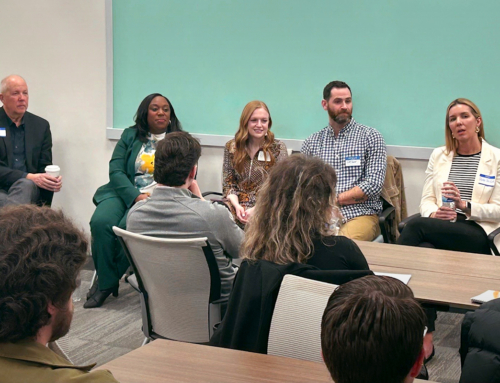On the face of it, giving a member of your work team a gift card to the hottest new restaurant in town seems like a slam-dunk when it comes to expressing appreciation for a job well done.
Yet most of us know at least one person who has a stack of unused gift cards or other thoughtfully bestowed items in a drawer, perhaps some of them not having seen the light of day for months or even years. When it comes to sending and receiving gratitude, we don’t all speak the same language.
Even those who are in a “nope, I’ll pass” frame of mind this Valentine’s Day are likely inundated with messages about gifts, romance and love right about now. But what the heck does love have to do with work, you might be wondering? And what do conversations about love even mean in the context of showing appreciation at the office?
Plenty, it turns out.
You may be familiar with the concept of the “love languages” introduced by author and radio host Gary Chapman in his 1992 book “The Five Love Languages.” It’s not an exaggeration to say that Chapman’s observation about the five core ways people express and experience love — words of affirmation, acts of service, physical touch, quality time and, yes, tangible gifts — has helped shape the culture over the last three decades and informed the conversation about how we interact.
The concepts have even been adapted to address how we interact at work, with colleagues, bosses, direct reports and even vendors, customers and business partners. The “love languages” framework has been retooled and updated to fit a modern work setting, and it’s been renamed the “languages of appreciation” because, let’s face it, talking about love in a professional context is … problematic at best.
Still, the languages themselves are the same, and exploring them can reframe how you show gratitude for a big project well done, celebrate a colleague or client’s anniversary or recognize extra effort. After all, just because you feel validated when someone gives you a verbal atta-boy doesn’t mean your cubicle mate wouldn’t strongly prefer that you remove a task from their plate or share an uninterrupted coffee break with them instead.
There are lots of great resources online to help your team incorporate these concepts into everyday interactions. At Vehr, we recently watched this interesting video from the folks at Science of People. We also took a quiz and talked through the results — which were informative, to say the least — using this free downloadable guide from leadership trainer Abbey Louie.
Here’s a bit more about the five languages of appreciation and how to use them in work relationships:
- Words of affirmation: Some people want to hear words of positivity, empathy and affirmation. For them, give compliments and encouragement, both in one-on-one interactions and public settings. Send emails, texts and cards with positive feedback. Avoid public criticism or non-constructive criticism as well as half-hearted listening.
- Acts of service: If this is their appreciation language, the greatest gift you can give is helping them out — chip in on a project, take a small task off their to-do list, stay after hours to help, and remind them that you’re available should they need a helping hand. Use action words like “I’ll help” or “Hey, I’ve been thinking of how we can get ahead on that assignment,” which lets them know you’re taking some of the mental load off them. You’ll lose them if you don’t follow through, however.
- Quality time: Give them some of your undivided attention to make them feel appreciated. Create intentional time to connect, whether walking to get a coffee together, going out for lunch or just scheduling regular, uninterrupted one-on-ones. Avoid going long periods of time without interaction, and plan ahead to minimize distractions when you meet.
- Tangible gifts: The key is the thoughtfulness, not the amount of money spent. A small toy or desk doodad, a hand-written card, a funny souvenir brought back from a work conference — these things mean a lot to the “tangible gifts” lovers. It’s important that the item feels personal and shows that you “get” them. When giving the gift, a short note or a quick chat to convey “I appreciate you” goes a long way — “I thought of you when I saw this” or “You love Marvel movies so much, I knew you’d like this.” Forgetting special occasions or accomplishments hurts for folks in this category.
- Physical touch: This is undoubtedly the trickiest area to explore in a work setting, but there are ways to make sure that those who prioritize touch can feel appreciated and get the oxytocin hit that it brings. Come out from behind your desk. Shake hands before and after even casual meetings. Offer fist bumps, high-fives or pats on the back — even hugs, if both parties have expressed that they’re comfortable with that. For this group, avoid turning away from them or walking away during interactions or addressing them from across the room.
Among the many revelations when our team delved into this topic: Fully seven out of 10 of our group ranked “acts of service” as their priority for receiving appreciation. And the other three? All of them ranked “acts of service” as their least favorite option, giving it a zero on the scoring standard.
Imagine how much differently we can relate to each other now, armed with this information. After all, those who practice the “five languages of appreciation” adhere to a different rule than the “treat others the way you want to be treated” Golden Rule. Instead, they follow the Platinum Rule: Treat others the way they want to be treated.








